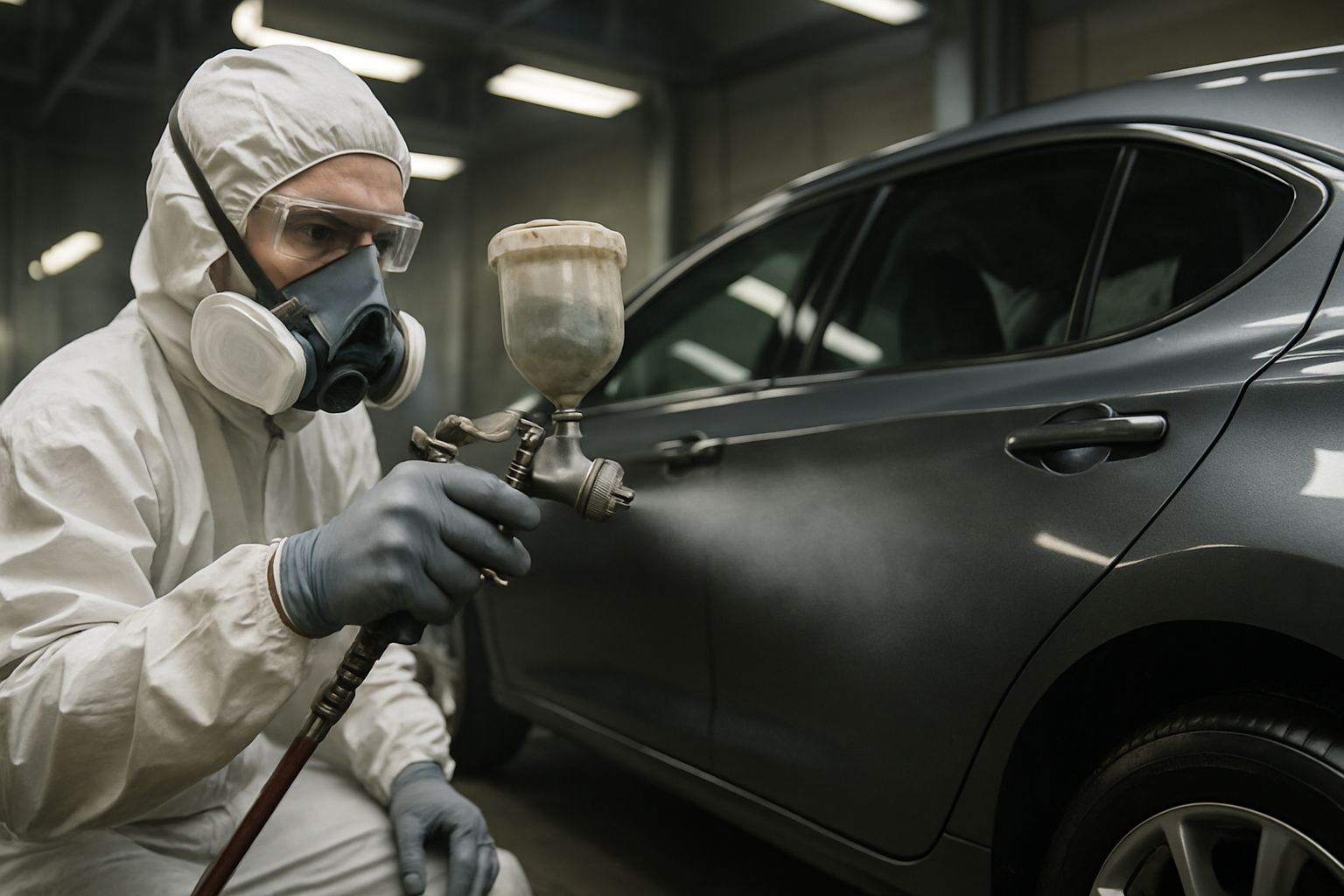Automotive Paint: The Invisible Shield That's More Than Just Color
From the glossy sheen of a sports car to the rugged matte finish of an off-road vehicle, automotive paint is far more than meets the eye. This often-overlooked aspect of vehicle manufacturing plays a crucial role in protecting cars from the elements, enhancing their appearance, and even improving their performance. Join us as we delve into the fascinating world of automotive paint technology, exploring its evolution, current innovations, and future potential.

Layering for Longevity
Modern automotive painting is a multi-step process, typically involving four to five distinct layers. The first layer, the primer, ensures proper adhesion to the metal surface and provides corrosion resistance. Next comes the basecoat, which gives the car its primary color. The clear coat, a transparent layer applied on top, protects the color and adds depth and shine. Some manufacturers also include an e-coat (electrophoretic coating) as an initial layer for superior rust prevention.
Beyond Aesthetics: Functional Finishes
While color and shine are important, automotive paint serves numerous functional purposes. Some paints incorporate ceramic particles to enhance scratch resistance, while others feature hydrophobic properties that repel water and dirt, making the vehicle easier to clean. UV-resistant additives in modern paints help prevent fading and protect the car’s interior from sun damage.
The Environmental Evolution
The automotive paint industry has undergone significant changes in response to environmental concerns. Traditional solvent-based paints have given way to water-based alternatives, dramatically reducing volatile organic compound (VOC) emissions. Some manufacturers are even experimenting with bio-based paints derived from renewable resources, promising a more sustainable future for automotive finishes.
Smart Paints: The Next Frontier
As vehicles become increasingly high-tech, so too does their paint. Researchers are developing smart paints that can change color on demand, self-heal minor scratches, or even generate electricity from sunlight. These innovations promise to revolutionize not just the appearance of vehicles, but their functionality as well.
The Art and Science of Application
Applying automotive paint is a delicate balance of art and science. Modern paint shops use robotic arms for precise, consistent application, but skilled human painters are still crucial for custom work and final touches. The paint must be applied in carefully controlled environments to ensure proper adhesion and finish quality.
Preserving the Finish: More Than Just Washing
Maintaining a vehicle’s paint job involves more than regular washing. Paint protection films, ceramic coatings, and waxes can all extend the life of automotive paint. These products provide additional layers of protection against environmental hazards like UV rays, acid rain, and road debris.
Color Psychology on the Road
The choice of automotive paint color goes beyond personal preference. Studies have shown that certain colors are more visible on the road, potentially improving safety. Additionally, color trends in the automotive industry often reflect broader societal shifts and economic conditions, making automotive paint a fascinating lens through which to view cultural changes.
The Future: Paints That Do More
As we look to the future, automotive paints are poised to take on even more roles. Imagine paints that can absorb pollutants from the air, change transparency to regulate interior temperature, or even communicate with other vehicles for improved safety. These concepts are already in development, promising a future where automotive paint is as much about function as it is about form.
In conclusion, automotive paint is a testament to the incredible advancements in materials science and engineering. Far from being a simple cosmetic coating, it’s an integral part of a vehicle’s design, protection, and functionality. As technology continues to evolve, we can expect automotive paints to play an even more significant role in the vehicles of tomorrow, blending aesthetics, performance, and sustainability in exciting new ways.





